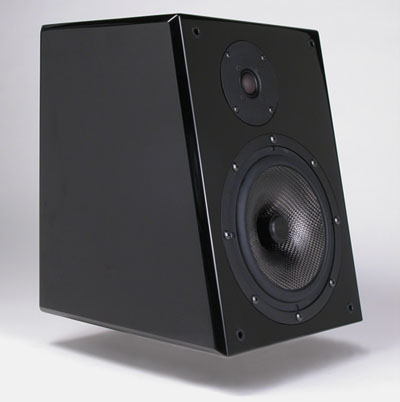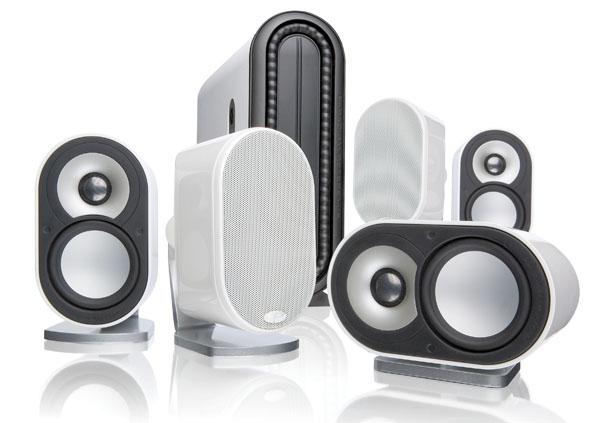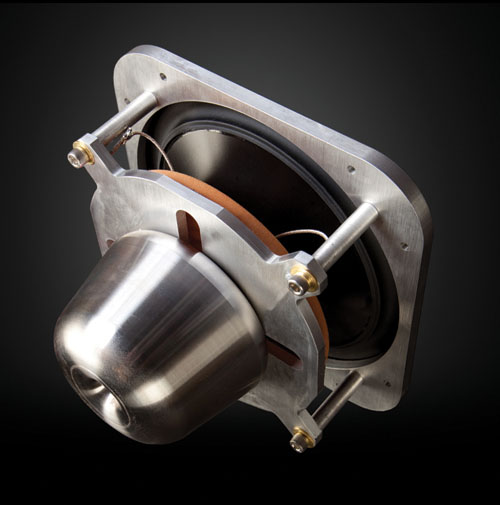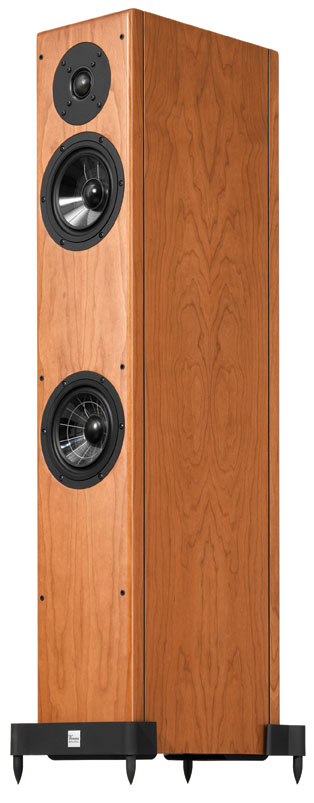
The humble subwoofer is a lot like a hockey goaltender – no one really notices them when they are performing well, but if they aren’t pulling their weight, everyone is in an awful hurry to point it out. While an under-performing subwoofer isn’t announced by an air horn and flashing red lights the way a floundering goalie is, a sound system that is unable to reproduce those oh-so-essential low frequencies can be just as conspicuous to those who know what they are listening for. A good subwoofer fills two roles in a sound system: it should extend low enough to reproduce frequencies that normal speakers are unable to and it should blend seamlessly with the main speakers at higher frequencies to relieve some of the strain placed on them by trying to reproduce the lower part of their register. British speaker manufacturer MJ Acoustics has been striving to fulfill both these goals for ten years now. MJ Acoustics’ current offering for the budget-conscious consumer is the PRO 55 MkI subwoofer priced at $1499. This downward-firing subwoofer uses a sealed cabinet design, which combines an ultra long-throw 12-inch driver with a 150 watt MOSFET amplifier and twin crossovers (one for the high level input and one for the low level input – a feature previously available only in the company’s more expensive subs). The PRO 55 MkI has a frequency response rated from 200 Hz all the way down to 10 Hz. MJ Acoustics’ philosophy is that its entire product line, from least expensive to most expensive, should all sound equally as good as one another, with the only difference between models being sound output (larger rooms requiring more output). As you move up the subwoofer model range, some small creature comforts are also introduced, such as a remote control and custom finishes.
The PRO 55 MkI is available in one finish, a black ash real wood veneer, with perfect joints and an immaculate finish all around. It feels incredibly solid, with the cabinet itself and all internals made from MDF. Dimension wise, the unit is not very obtrusive, measuring 13.6 inches wide by 15 inches high by 13.6 inches deep, but tipping the scale at over 33 pounds. All the sides, as well as the top, of the enclosure are bare, save for the rear of the unit, where all the controls are located. On the rear panel there are both gold-plated RCA (low level) and Neutrik Speakon (high level) inputs, and discrete high and low level crossover and volume controls for each, respectively. The rear panel also has a knob to adjust phase control (0-180 degrees), an on/off toggle switch and an IEC inlet for the power cable. Flipping the unit upside down to inspect the driver itself, reveals an ultra-stiff 12-inch driver encircled by a very wide and very durable feeling surround. The width of the surround is easily twice the thickness of the two reference Klipsch Sub 10 units in my room, and the long excursion this affords the driver is surely one of the reasons the PRO 55 MkI is able to reach as low as it does. Also of note is the lack of a port on the PRO 55 MkI, as MJ Acoustics has eschewed the extra SPL of a ported design in exchange for the accuracy and controlled response of a sealed box.
After removing the twin Sub 10s from my reference Klipsch Synergy speaker system (F2 mains, C2 centre, S2 surrounds, B2 bookshelves as rears), I plugged the PRO 55 MkI (via its low-level RCA connector) into the subwoofer output of my Pioneer Elite SC-27 receiver. Then I ran the receiver’s MCACC calibration routine, setting the receiver’s sub crossover to 80 Hz. After saving that calibration profile I ran the subwoofer for a few days, both watching movies and listening to music, in order to allow it to break in. After a good number of hours of use, I re-ran the MCACC routine and sat down with my stack of demo discs.
The Blu-ray release of Transformers, even though a few years old at this point, still has some of the most bombastic sound effects ever committed to a disc. Right off the bat, I was impressed by how the PRO 55 MkI was able to fill my decent sized room (22 x 11 x 8.5 feet), given this subwoofer’s size. As the opening monologue droned on, I was satisfied by how clear and distinct the lower registers of Peter Cullen’s heavily effected voice was. There was a definite tightness and distinction that I was not used to hearing. The brief bit at the start of the second chapter where the helicopter blades spool up, both in pitch and volume, is a fantastic place to test a sub’s mettle. Many lesser subs will often vibrate, rattle, and generally sound like they are imploding. The PRO 55 MkI sub, however, held fast through this section, displaying a precision that was admirable. I also auditioned the infamous “Ironhide flip” scene from chapter 19 numerous times, and was impressed by this little sub’s ability to seemingly reproduce frequencies a good deal lower than my reference subs. MJ Acoustics claims that the MkI is able to reach as low as 10 Hz, and while I do not have the required gear to scientifically support or debunk this claim, I can say that the MkI, to my ears, goes as low or lower than any other sub that I have had in my current room, all while maintaining accuracy and precision and never once sounding sloppy or out of control.
Recognizing that not everyone is going to buy a subwoofer solely for watching films, I also put the PRO 55 MkI through its paces with several selections from my music collection, after first adjusting the crossover of my Elite receiver up to 120 Hz. My thinking was that it would be a more demanding test of the sub‘s abilities, allowing it to play a little higher. The heartbeat effect in “Speak to Me” off Pink Floyd’s Dark Side of the Moon SACD was sufficiently deep and thumpy, and as the opening chords of “Breathe” kicked in, I was again impressed with the tightness and control afforded by the PRO 55 MkI. Roger Waters’ bass was clean and distinct, with no laziness and slop on the release of the individual notes. “Money”, also a standout cut, was allowed to fully breathe, with the PRO 55 MkI really snapping to attention during the manic parts, but slipping quietly into the background during the calm interlude about 4:00 minutes in.
I also auditioned several cuts from James Newton Howard’s “I am Legend” soundtrack, which features both the most dainty of strings and loud, pounding, drums and aggressive synths, all beautifully recorded with tons of dynamic range. Opening track “My Name Is Robert Neville” gave a taste of things to come, as its delicate intro quickly gave way to heavily effected, snarling synths. The PRO 55 MkI shone here, being so firm and well articulated that the monstrous drums in “Darkseeker Dogs” literally leapt from the front of my room at me, and then pulled back just as quickly with no sloppiness to be heard. The lower tones of the brass section were also faithfully reproduced, with an audible bite and crispness that managed to breathe new life into an album that I’ve heard countless times before.
All MJ Acoustics subwoofers and speakers are designed and built in the U.K., eschewing less expensive materials and labour found elsewhere, and it shows. While the PRO 55 MkI is not the first small footprint sub I have had in my listening room, it is certainly the most powerful and the most capable. It was able to faithfully reproduce the lowest synthetic tones in an action film’s LFE track, while still being precise enough to reveal the exact moment that a bassist’s pick left the string. I can wholeheartedly recommend the PRO 55 MkI to anyone looking for a sub that won’t break the bank, and can easily fill most small to medium sized rooms with thick, clean, low bass. Now if only finding a good goalie were this easy!
Manufacturer:
MJ Acoustics
www.mjacoustics.co.uk
Distributed in Canada by Black Sand Audio 306-535-9897 www.blacksandaudio.ca
MJ Acoustics PRO 55 MKI Subwoofer
Price: $1499 CAD






















